If you keep receiving 1-866-265-5220 pop-up while using the browser, you may get overwhelmed by the scaring message saying something like "Warning! Your computer has been infected" or "hard disk failure or system crash progress". You should know that, 1-866-265-5220 pop-up, purporting to be a Microsoft/Apple support page and requiring a call into certified engineers is hammered out by certain adware that sneaks into your computer via every opening when you download certain bundled freeware, visit corrupted pages or open junk attachment.
Never call 1-866-265-5220 as the pop-up asks
Locking up your screen and pushing you hard to call the so-called tech support helpline, it is nothing but a scam connecting you with frauds. Therefore you shall never call this 866 line and let the so-called technician to control your computer remotely. This alert is in nature used to promote low-quality service, which actually make no progress to protect your system. The swindlers behind are waiting to scam you out of money. You might even give the cyber hackers the chance to install malware on your computer or steal your information.
Since 1-866-265-5220 pop-up is generated by the adware or riskware getting installed stealthily, it will never die until you locate and remove the initiator. Other problems such as malware installaion, virus infection or system mulfunctions may start to bother you if this nuisance sticks around. For the good of your browser security, you are supposed to remove pop-up from 1-866-265-5220 technical scam speedily.
Plan A: Clean up 1-866-265-5220 Tech Scam Automatically with SpyHunter (For Win OS)
Plan B: Purge 1-866-265-5220 Tech Scam Automatically with MacKeeper (For Mac OS)
Plan C: Remove 1-866-265-5220 Tech Scam Manually from your computer
Plan A: Remove 1-866-265-5220 Tech Scam Automatically from Win OS with SpyHunter
SpyHunter by Enigma Software Group LLC is a spyware detection & removal tool providing rigorous protection against the latest threats including malware, trojans, rootkits & malicious software. It will not only update malware detection and removal definitions daily, but also offer you free technical support and custom fixes for hard-to-kill malware with limited interaction.
Step 1. Click the following icon to get malware removal tool SpyHunter and install it on your computer

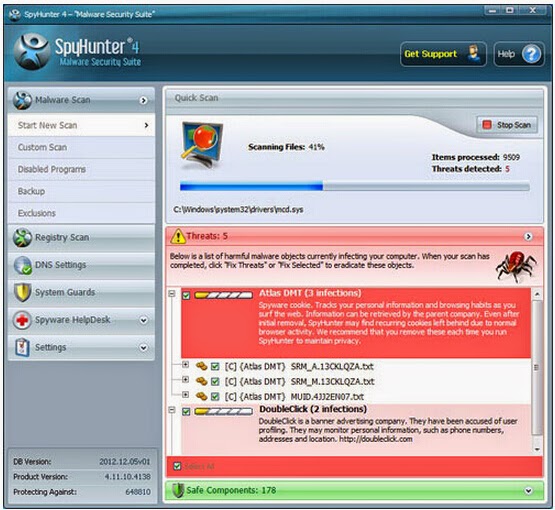
Step 3. Get rid of all detected items by clicking "Fix Threats" button
Plan B: Clean up 1-866-265-5220 Pop-up Scam Automatically from Mac with MacKeeper
MacKeeper has impressive features: *** Search and solve, that offers you information about cleaning, the performance and the security of your computer. *** Internet Security, a module that once installed protects you against malware. *** Antitheft, to locate your Mac in case of theft. *** Expert at hand, thanks to which you can get in touch with specialists. Therefore, if you want a program that allows you to have full control on your Mac's security, this is the tool you need. |
Step 1. Download MacKeeper and get it installed to your Mac by following the on-screen tips.
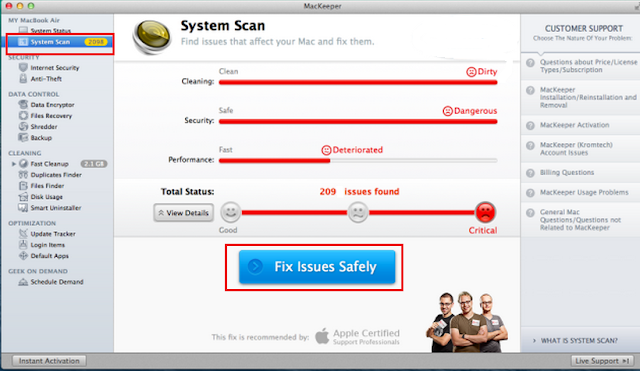
MacKeeper can do more than erase all sorts of internet threats and allow you to have full control on your Mac’s security. If you have any problem using this tool, you could get in touch with specialists from its Geek on Demand feature.

Plan C: Remove 1-866-265-5220 Pop-up Scam Manually
Step 1. End malicious processes generated by this Ad
Right click on the taskbar and select Start Task Manager. Navigate to Processes tab, search for malicious processes and suspicious ones, choose them and click “End Task”.
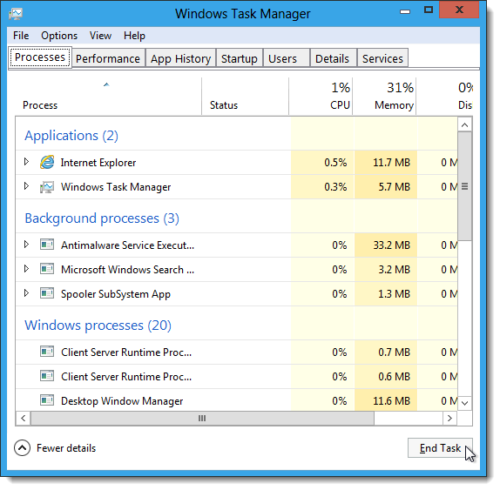
On Mac OS:
Choose Force Quit from the Apple menu, or press key combination (Command + Option + Esc) to open the Force Quit Applications window to do this.
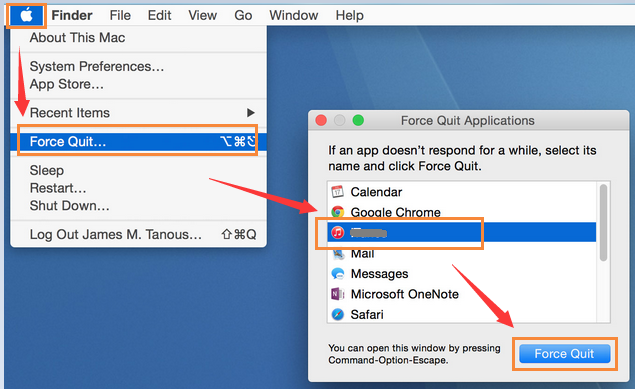
Step 2. Uninstall unwanted application that bundled with this Ad
On Windows Computer:
Win 7: Go to the “Start” menu, select “Control Panel”. Locate “Programs”. If there is anything related to this scam pop-up on the list of your Programs, then select it and uninstall it.
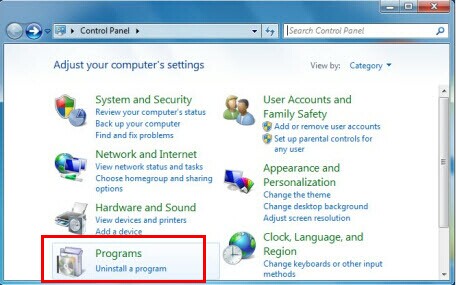
Windows 10/8:
- Right-click the Start button (or Open Win+X Power menu), tap on Control Panel
- click Uninstall a program, right-click on the program that you want to remove from your Windows and then click Uninstall button.
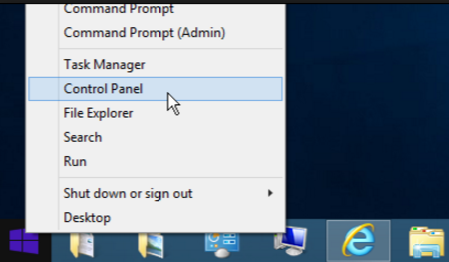
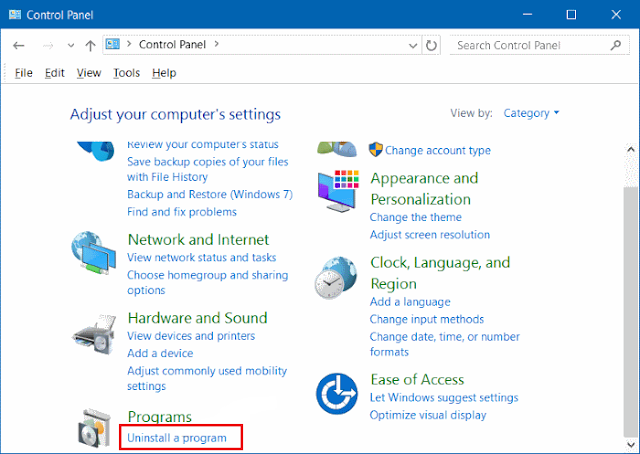
On Mac:
Go to the Launchpad, search for suspicious application, click and hold its icon with your mouse button to continue.
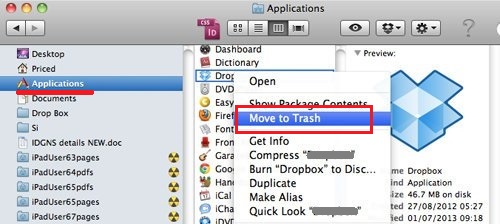
Step 3. Reset your affected browsers one by one
Google Chrome:
Click the Chrome menu on the browser toolbar and select Settings:
a) Scroll down to the bottom of chrome://settings/ page and click Show advanced settings
b) Scroll down to the bottom once again and click Reset Settings
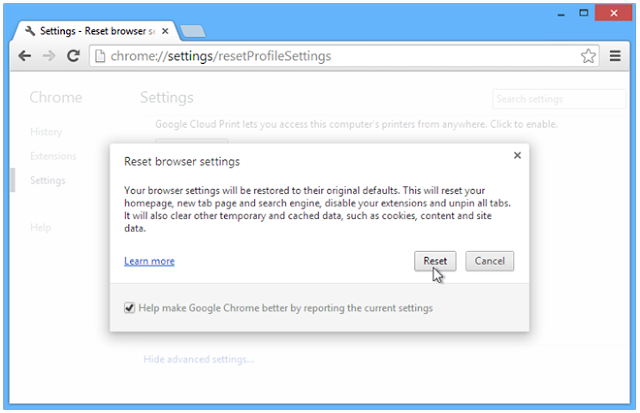
Internet Explorer:
a) Click Start, click Run, in the opened window type "inetcpl.cpl".
b) Click "Advanced" tab, then click Reset.
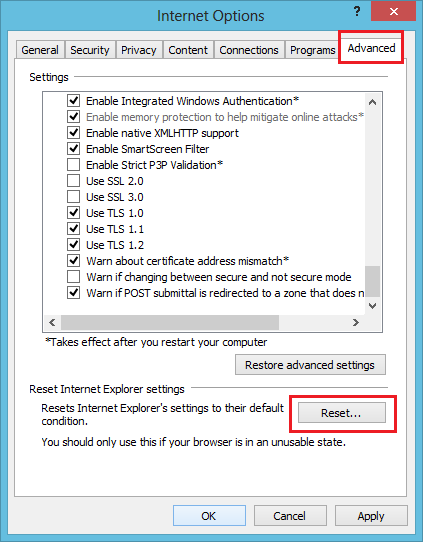
Mozilla FireFox:
Open Firefox->> choose Help ->>choose Troubleshooting information
a) Click on Reset Firefox. Choose Reset Firefox again to make sure that you want to reset the browser to its initial state.
b) Click Finish button when you get the Import Complete window.
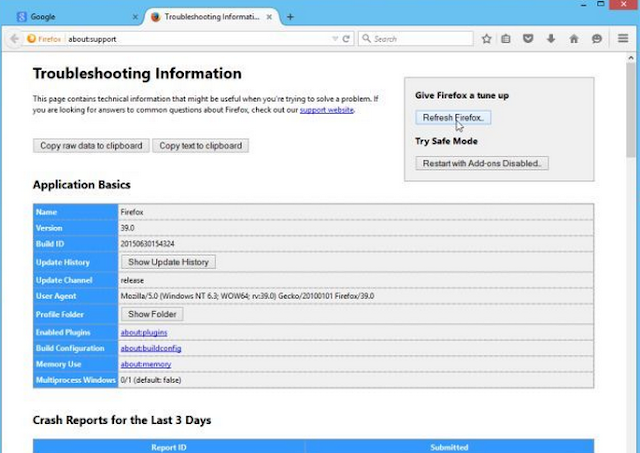
Edge:
a) Click the three horizontal dots in the upper right corner of the Edge window and choose "Settings". b) Under Clear browsing data, click "Choose what to clear" and then click "Show more". c) There are a lot of data types here. Select them all and click "Clear".
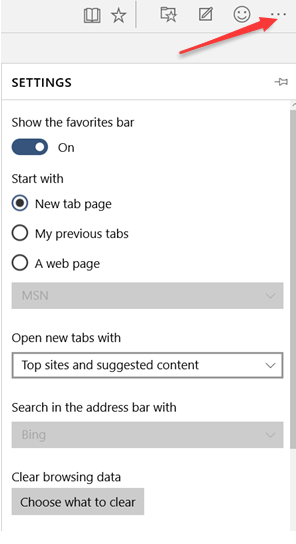
Safari
a) Open your Safari browser from the dock.
b) Click on Safari in your Safari menu at the top of your screen.
c) A drop-down menu will now appear. Choose the option labeled “Reset Safari…”
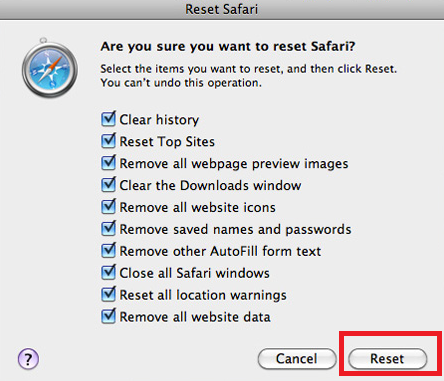
Specially Remind:
Anything taking a hand in your browsing and messing up things like 1-866-265-5220 Tech Scam should be eliminated in a timely fashion. If you are puzzled by the manual removal steps, you could feel free to get assistance from SpyHunter (For Win OS) or MacKeeper (For Mac).



No comments:
Post a Comment